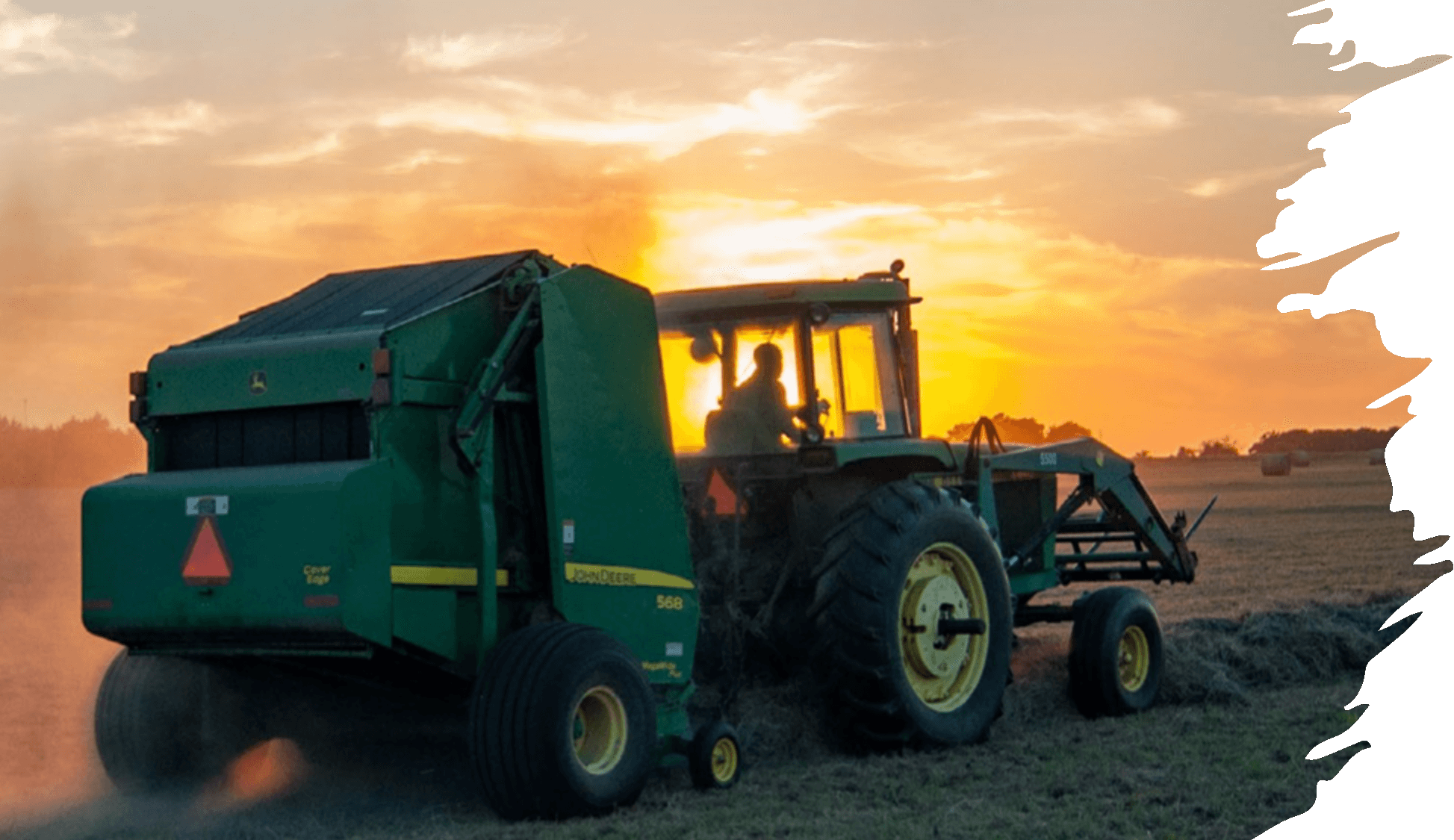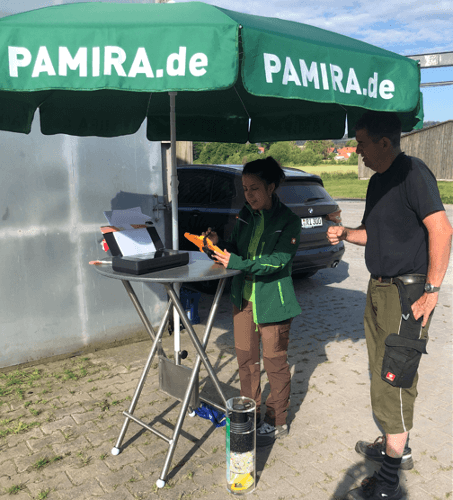
The return and disposal of packaging at the collection points has so far been a largely manual process in which the registrations, the recording of the return quantities and the creation of the return protocol were processed manually by inspectors. Together with zauberware and IMMERWIEDER DESIGN, RIGK was able to design a considerably more efficient, digitalised PAMIRA process, from which everyone benefits - because it facilitates the work of all those involved on a daily basis.
What is RIGK's mission as a company?
Thorsten Heil: It is part of our mission to return packaging and plastics efficiently and sustainably, while protecting the climate and the diversity of species, preserving habitats and landscapes and conserving economic resources. Sustainable and responsible action is our most important goal. With the return and recycling of used pesticide packaging, we want to use the PAMIRA system to make our contribution to a world that will continue to be worth living in for all of us in the future and from which future generations can also benefit.
How does the PAMIRA system and PAMIRA sign work in practice?
Th: The PAckMIttel-Rücknahme Agrar (PAMIRA®) is a simple, voluntary take-back system which the German plant protection agent industry has been successfully practising nationwide in cooperation with the trade since 1996. The aim is to ensure the responsible and controlled take-back and recycling of completely empty pesticide and liquid fertilizer packaging. Used packaging bearing the PAMIRA symbol can therefore be handed in at our collection points free of charge on certain dates throughout Germany. The approximately 370 collection points are provided by the trade. Currently, about three quarters of all packaging is collected by us via PAMIRA and sent for suitable recycling (www.rigk.de/nachhaltigkeit/recycling-bei-rigk). More than 50,000 farmers participate year after year and up to 500 returns are processed each year.
What were the general conditions and how did the PAMIRA process work before digitalization?
Th: For a safe and environmentally friendly disposal and recycling of the returned pesticide packaging, a few things have to be taken into account when returning it and everything has to be documented and signed in a return protocol. On delivery to the collection point, the packaging is first checked by trained inspectors and recorded on a paper document in duplicate. Up to now and every year these have been laboriously filled in by hand and then signed by both parties. The quantity taken back could not be changed afterwards.
The farmers kept the duplicate copies of the form and we kept the originals. This process is important for correct documentation under waste management law, but also for the farmers themselves as proof of proper disposal and recycling to the supervisory authority. The form was then filed with us as an analogous document.
How did the idea for the digitalisation of the PAMIRA process come about?
Th: A successful collection should be organized as well as possible. In particular, it is important that the collection date fits the time and that the customer is informed in good time via suitable channels. In addition, the return process should be as customer-friendly as possible. If the collection point is intensively frequented, all parties involved benefit from this and together they contribute to the success of the PAMIRA take-back system.
We had known for a long time that there was enormous potential for improvement in the collection process and in the creation of the take-back form - but we still had no concrete idea how exactly we should optimize the process and, above all, how we should efficiently digitalize it. At the latest during the initial workshop with zauberware and IMMERWIEDER DESIGN, we realized: "This is much easier and more efficient with the use of the right technology". Finally, an end to the time-consuming handling of forms. It was clear: the paper-based process was to be digitized in the future via tablet, a stable, clearly arranged backend and an interface for synchronization with our customer database. This enabled us to develop a rough project concept within a short time and to start zauberware with the refinement, the setting up of the technical framework and ALWAYS REPEAT the design.
How has the PAMIRA process been streamlined in practice through the use of the web application and iPads?
Th: Each delivery in the PAMIRA system must be documented with an acceptance certificate. Using the new PAMIRA take-back app, inspectors can record all packaging materials as quickly as never before with their iPad, document them with photos if necessary and synchronize the recorded data in the master database. The form can be digitally signed within a few seconds, printed out on a mobile printer and, if the customer's e-mail address is given, can be sent at the same time as a PDF. An inspector can now record significantly more returns in the same time and the waiting times for farmers are reduced enormously, a win-win situation for all parties involved.
What advantages does the PAMIRA app offer you as a company, for your controllers and for farmers?
Th: We as a company are of course primarily pleased with the economic effects of the streamlined process. Our inspectors can process returns more efficiently and faster, so that farmers also benefit from reduced waiting times and faster returns. In addition, the digitalised process has a much lower risk of error. We are pleased to have finally buried manual capture and scanning after the widespread introduction of the digitized solution.
Test runs of the tool have already taken place at some pilot sites. The changeover to a fully digitized database was easier than initially assumed and now allows us to create efficient evaluations and reports. The digitised storage is also ideal in the event that a form is lost and a farmer contacts us. Since each form is stored in our backend in the master data of the respective farmer, it can be resent to him by e-mail with just a few clicks. At the end of the day, all this not only leads to immense time and cost savings, but - what we are particularly pleased about - also to an improved customer experience and higher satisfaction of all persons involved in the process.

Bildnachweis: RIGK GmbH / PAMIRA
Were there any uncertainties or blockers before the start of the digitization project?
Th: For us it was an enormous step to approach such a project as an individual development. We lacked the experience, since we had previously relied almost exclusively on standard solutions. Of course, we were very concerned in the run-up to the project with the risks that arise from a greenfield development. That's why we spent a long time looking for the right implementation partner for the digitization process of PAMIRA. In the end we gave zauberware and IMMERWIEDER DESIGN the necessary confidence advantage and are still very satisfied with this decision today. We felt that we were in the best hands throughout the entire project and were thus able to eliminate all the initial uncertainties that such a pilot project brings with it.
What were the biggest challenges in the digitalization of the business process?
Th: For us as a medium-sized company, there were essentially three major challenges that we were able to master successfully in the project team:
1. The target group: the enterprise app for digitizing the PAMIRA process is used by our controllers, most of whom are now in retirement. Here it was extremely important to us that the app contains all the necessary features but at the same time offers a good user experience through a simple and self-explanatory design. Even if you're not in daily contact with the operation of tablets and apps.
2. The external conditions at the collection points: As these are almost exclusively outdoor locations where collections have to take place in unpredictable weather conditions and without an available Internet connection, stable offline functionality is essential for our process. Also the printing of the protocol via W-LAN printer and hotspot has to run stable and has proven itself in several practical tests.
3. Clean integration of the process into the existing company architecture: To ensure that the captured data is now reliably transferred to the company's own CRM and the customer master data can be enriched, it was necessary to develop a high-performance and secure interface. The focus here is not only on protecting our customer data with the highest security standards, but also on meeting all legal requirements with regard to the basic data protection regulation.
How is RIGK dealing with the increasing digitalization and what is the mood in the industry?
Th: Our slogan "Experience. Reliable. Innovative." is no coincidence but a conscious orientation to which we have dedicated ourselves. The digital transformation is in full swing in all industries and those who do not participate in it quickly risk competitive disadvantages. Of course, the issue is more topical than ever in the recycling industry and we are working every day to become more innovative and better. We want to be pioneers and improve our processes through digitalization for all parties involved. The successful PAMIRA project has shown us that with the right partner at hand, we can fulfill our mission to become the innovation leader in our industry.
Small and medium-sized companies in particular still too often shy away from an initially supposedly high IT investment or are afraid that the project could become a cost trap or even fail due to the diverse technical challenges. They prefer to stick to manual, error-prone and inefficient processes after all. This is exactly where companies usually have a lot of unused potential that can be better exploited by converting and using modern software and hardware. I can only encourage you to take the next step digitally.
Photo credits cover picture: Jed Owen
